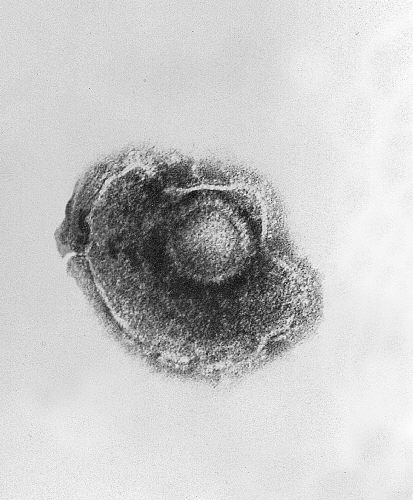Playlist
Show Playlist
Hide Playlist
Herpes Zoster (Shingles)
-
Slides Dermatology Infectious Disorders.pdf
-
Download Lecture Overview
00:01 Our topic here is shingles. 00:03 In other words, herpes zoster. 00:06 The etiology is a reactivation of latent Varicella-zoster virus, or VZV, in a patient that has had chicken pox or -very rarely- has been immunized with the live Varicella vaccine, which is no longer available in the USA. 00:20 The latent virus is not infectious, but when reactivated from the dorsal root ganglion later in life causes a painful dermatomal rash known as shingles. This can be seen more often in the elderly and can be brought on by severe stress at any age. 00:34 And then you can imagine that this particular virus is making its way down the dermatome, and when it does, whoa, man, this thing hurts. 00:45 Morphology: Well, you can imagine that if this is herpes, then what are you going to find? These fluid-filled type of structures called vesicles. 00:53 So you have a reticular pain followed by your vesicles and ultimate crusts. 00:59 Rarely disseminated in immunocompromised patients. 01:05 If you take a look at the dermatome in this particular individual, you’ll notice that you have vesicle type of formation that’s taking place on the skin and it’s usually some type of history of immunocompromise in this patient and it hurts. 01:17 Most common in elderly. 01:19 Also could be seen with immunosuppression. 01:22 In immunocompetent individuals, a unilateral, painful, vesicular eruption with a well-defined dermatomal distribution is essentially diagnostic OF VZV. PCR testing is preferred since PCR is the most sensitive laboratory test to diagnose herpes zoster. 01:43 Not typically biopsied. 01:44 If testing by PCR or viral culture is not available, a Tzanck smear can be performed. Fresh lesions can be scraped with your blade, placed on a slide, stained, and examined under a microscope. 01:58 Both HSV and VZV will show, as you seen in this picture, multinucleated keratinocytes on Tzanck smear. 02:07 Herpes zoster or herpes in general. 02:09 You should be thinking Tzanck and you should be thinking multinucleated cells and here, specifically, if it’s in the skin and in your keratinocytes, as you see in this image. 02:23 Management of herpes zoster and the painful rash of shingles includes oral antiviral medications such as acyclovir, valacyclovir, or famciclovir. 02:32 These medications need to be started within 72 hours of the rash outbreak to be effective. Steroids do not decrease the risk of post-herpetic neuralgia and chronic pain, but may be used to help with moderate to severe acute pain, along with short-term opioid analgesics. Most cases of shingles are self-limited, but risk of post-herpetic neuralgia increases with age. If post-herpetic neuralgia develops, it may last months or years and may be treated with agents used to help with chronic pain such as amitriptyline or gabapentin.
About the Lecture
The lecture Herpes Zoster (Shingles) by Carlo Raj, MD is from the course Infectious Skin Diseases.
Included Quiz Questions
What test can be used for the diagnosis of herpetic infection, including shingles?
- Tzanck smear
- Gram stain
- Skin biopsy
- Potassium hydroxide
- Immunofluorescence
What is the preferred treatment for shingles affecting the thoracic dermatome of a woman who has had symptoms for 24 hours with only mild pain?
- Oral acyclovir or valacyclovir
- Oral steroids
- Oral antibiotics
- Topical steroids
- Hydroxychloroquine
Customer reviews
5,0 of 5 stars
| 5 Stars |
|
5 |
| 4 Stars |
|
0 |
| 3 Stars |
|
0 |
| 2 Stars |
|
0 |
| 1 Star |
|
0 |




